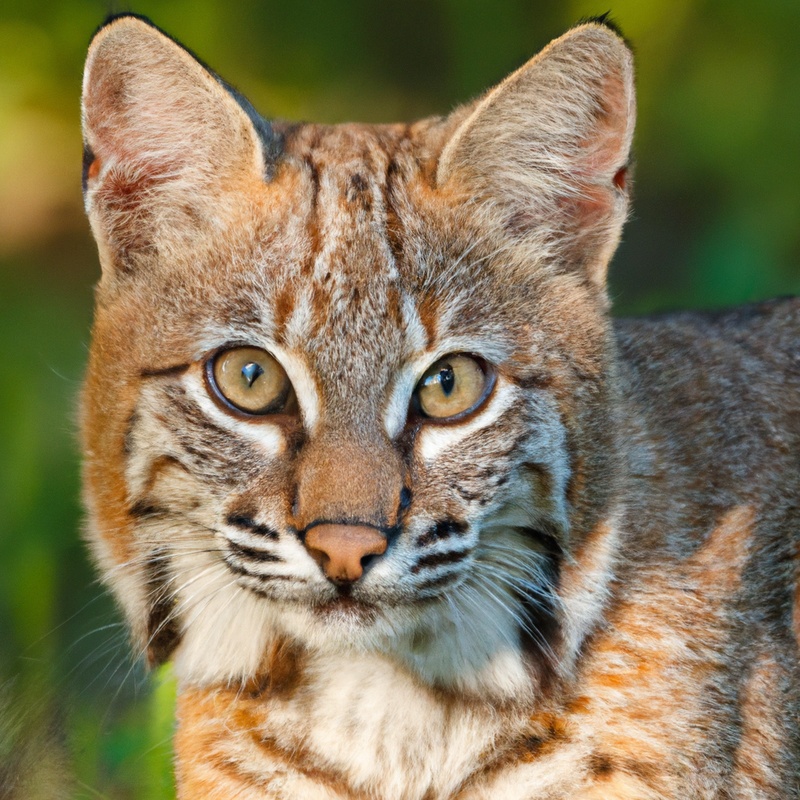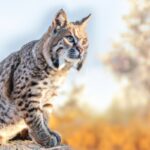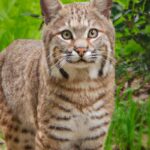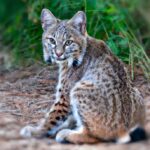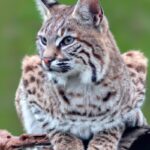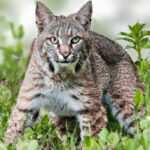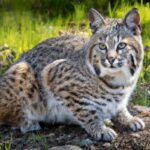Key Takeaways:
- Bobcat hunting is legal in Colorado under regulated conditions.
- Colorado’s hunting season for bobcats typically runs from November to February.
- A valid hunting license and bobcat permit are required to hunt bobcats in Colorado.
- Hunters must comply with bag limits and reporting requirements set by the Colorado Parks and Wildlife.
Have you ever witnessed the grace and stealth of a bobcat in the Colorado wilderness? These elusive creatures, with their mesmerizing amber eyes and agile movements, are a hunter’s ultimate challenge.
Whether you’re a seasoned hunter or a curious adventurer, bobcat hunting in Colorado offers a thrilling experience like no other.
In this comprehensive guide, I’ll share valuable insights on understanding the behavior and habitat of bobcats, the necessary licenses and regulations, essential gear and equipment, scouting techniques, hunting methods, tips, safety precautions, and much more. Get ready to embark on an exhilarating journey into the world of bobcat hunting in Colorado.
Topic | Hunting Bobcats in Colorado |
|---|---|
Hunting Season | November 1 – March 31 |
Hunting License | Valid Colorado small game hunting license is required |
Tag Required | Yes, a bobcat hunting tag must be purchased separately |
Bag Limit | Unlimited, but for each bobcat harvested a pelt seal must be obtained within 5 days |
Weapon | Legal firearms, archery equipment, or trapping methods |
Regulations | All hunters must comply with Colorado Parks and Wildlife regulations |
Private Land | Hunting allowed with landowner permission, check specific regulations for private land hunting |
Pros | |
Opportunity to track and harvest bobcats | |
Population control and management | |
Challenging and rewarding hunting experience | |
Cons | |
Requires specialized knowledge and skill | |
Expenses associated with hunting gear and licenses |
Bobcat Hunting in Colorado: A Complete Guide
Understanding Bobcats: Behavior, Habitat, and Population
Bobcats are fascinating creatures, and understanding their behavior, habitat, and population can greatly enhance your hunting experience. These solitary and elusive animals are skilled hunters themselves, mainly active during dawn and dusk.
They typically thrive in varied habitats such as forests, deserts, and even suburban areas.
Bobcats prefer areas with dense vegetation and access to prey. Colorado has a healthy population of bobcats, providing ample opportunities for hunting enthusiasts.
By familiarizing yourself with their behavior, preferred habitats, and population patterns, you’ll be better prepared to track and pursue these elusive creatures effectively.
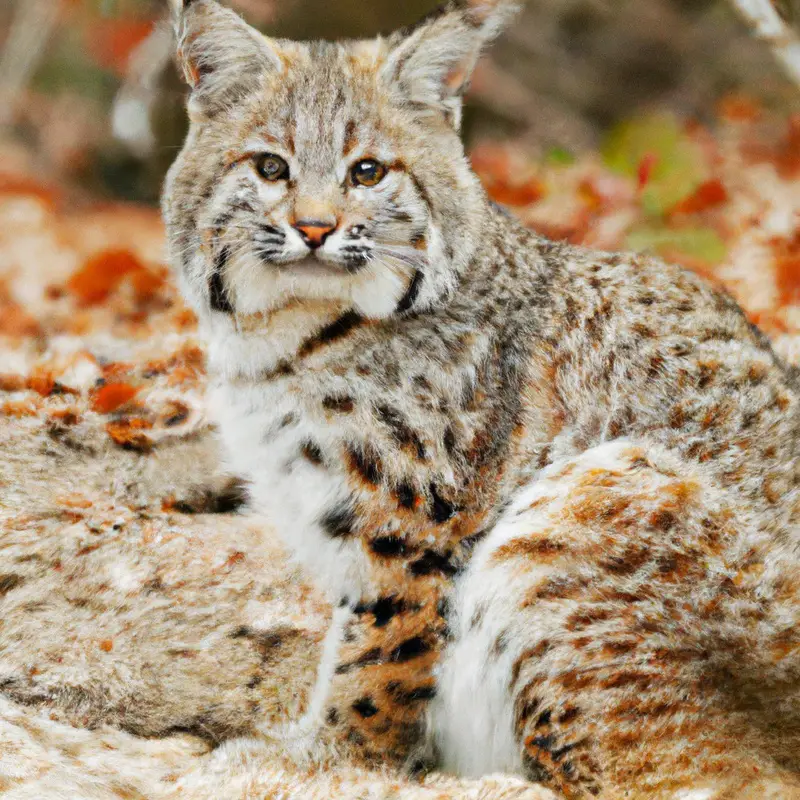
Hunting Regulations and Licensing in Colorado
To hunt bobcats in Colorado, you need to know the hunting regulations and licensing requirements. You must have a valid hunting license, either for residents or non-residents.
The license allows you to hunt bobcats during the designated hunting season, which varies from year to year.
It’s important to follow the bag limit, which is currently set at five bobcats per season. Additionally, hunters are required to report their harvest within five days and present the pelt to a Colorado Parks and Wildlife office within 10 days.
Remember to always check for any updates or changes to the regulations before you go hunting.
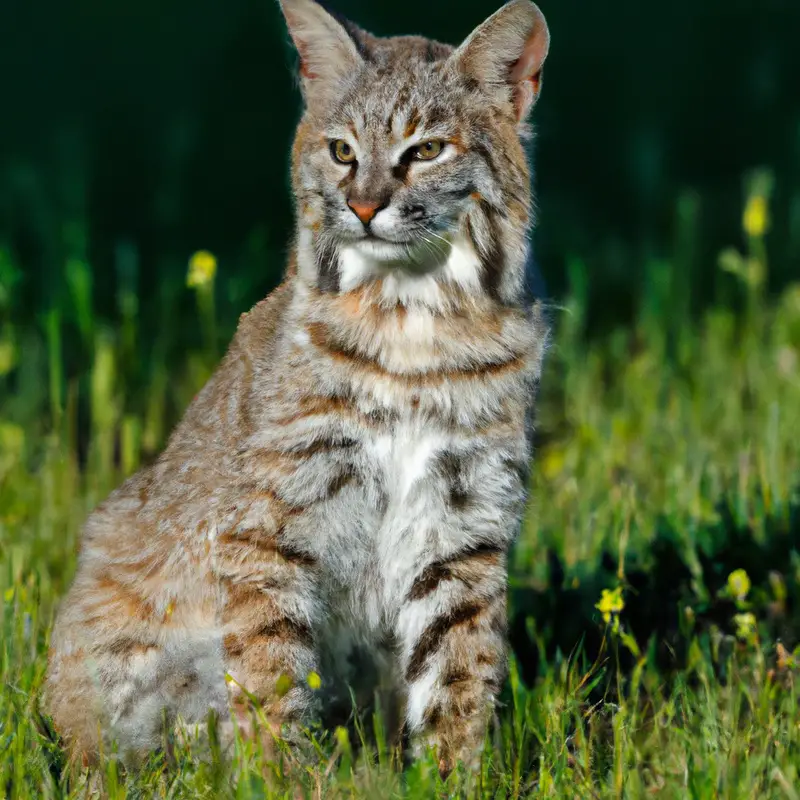
Essential Gear and Equipment for Bobcat Hunting
When heading out for bobcat hunting in Colorado, there are a few essential gear and equipment that you should have.
Firstly, a good quality rifle or shotgun is important for accurate and effective shots.
Additionally, invest in quality optics such as binoculars for spotting and a scope for precise aiming.
A predator call is crucial for attracting bobcats, and scent control products can help mask your odor.
Camouflage clothing and a comfortable pair of boots are also essential.
Remember to always check and comply with local hunting regulations.
Scouting for Bobcat: Identifying Signs and Tracks
When scouting for bobcats, a key skill is identifying their signs and tracks. Look for distinctive paw prints, typically around 2-3 inches in size with four toes and a pad.
Bobcats also leave scratch marks on trees and logs to mark their territory.
Keep an eye out for scat, which is often cylindrical and filled with hair and bone fragments. Look for signs of hunting, like partially eaten prey or drag marks.
By familiarizing yourself with these indicators, you’ll improve your chances of locating and hunting bobcats in Colorado.
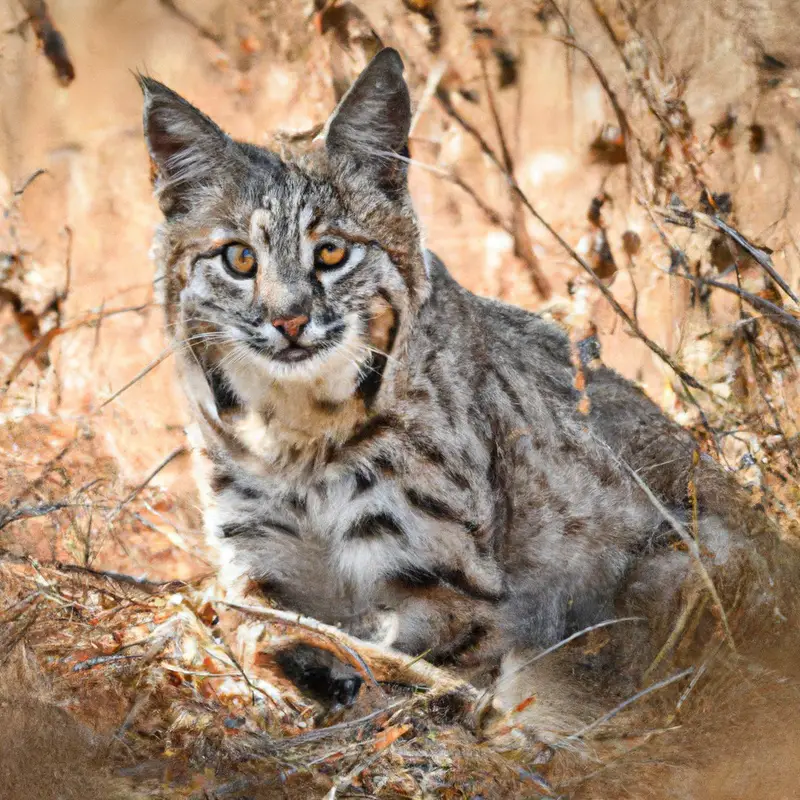
Bobcat Hunting Methods: Spot-and-Stalk, Calling, and Trapping
There are three main methods for hunting bobcats: spot-and-stalk, calling, and trapping. Spot-and-stalk involves actively searching for bobcats and approaching them stealthily.
Calling is the process of using predator calls to attract bobcats to your location.
Trapping involves setting up traps to capture bobcats. Each method has its advantages and challenges, so it’s important to choose the one that suits your hunting style and preferences.
Remember to follow local laws and regulations when hunting bobcats.
Bobcat Hunting Tips and Techniques
Bobcat hunting requires skill and strategy. Here are a few tips and techniques to help you be successful:
- Scout the area: Before you head out, spend time studying maps and talking to locals to identify the best hunting spots. Look for signs of bobcat activity, such as tracks or scat.
- Use predator calls: Bobcats are attracted to distressed sounds of prey. Invest in a good electronic or mouth-blown predator call to imitate the sounds of a wounded animal. This can increase your chances of luring them in.
- Set up ambush points: Bobcats are known for their stealth and ambush tactics. Choose locations where you can observe their movement without being easily detected. Look for areas with good visibility and natural cover.
- Stay patient and still: Bobcats have keen senses, so it’s important to remain motionless and quiet while waiting. A bobcat may approach cautiously, so be prepared for a long wait. Patience is key in bobcat hunting.
- Opt for low-light conditions: Bobcats are more active during low-light periods, such as dawn and dusk. Take advantage of these times when visibility is still decent, but the bobcats are more likely to be on the move.
Remember, bobcat hunting requires proper licensing and compliance with local regulations. Always prioritize safety and ethical hunting practices.
Happy hunting!
Field Dressing and Transporting Bobcat
Field dressing and transporting a bobcat is an important part of hunting.
After harvesting the animal, you’ll need to properly prepare it for transportation and eventual processing.
Here are some steps to follow:
- Field Dressing: Begin by carefully skinning the bobcat, starting from the hind legs and working your way towards the head. Remove the organs, being cautious not to puncture the stomach or intestines. Take your time to do this properly, as it will help preserve the meat.
- Cooling: Once the bobcat is field dressed, it’s important to cool it down as quickly as possible. Utilize ice packs or place it in a cooler with ice to maintain freshness. Keep the animal out of direct sunlight and in a cool environment to prevent spoilage.
- Transportation: When transporting the bobcat, ensure it is securely wrapped and placed in a suitable container or bag. This will prevent any leakage or contact with other items. It’s important to comply with local regulations for transporting wild game, so be sure to research and follow any specific guidelines in your area.
By properly field dressing and transporting the bobcat, you’ll ensure the quality of the meat and comply with hunting regulations.
Enjoy your successful hunt!
Bobcat Hunting Safety Tips
When hunting bobcats in Colorado, it’s essential to prioritize safety. Here are some tips to keep in mind:
- Know the regulations: Familiarize yourself with the hunting laws and regulations in Colorado. This includes obtaining the necessary licenses and permits.
- Use appropriate gear: Wear blaze orange or other highly visible clothing to ensure your visibility to other hunters. Carry a reliable firearm or bow that’s suitable for bobcat hunting.
- Practice firearm safety: Always treat your firearm as if it’s loaded and keep the muzzle pointed in a safe direction. Be aware of your surroundings and avoid shooting near roads, buildings, or other hunters.
- Recognize the signs: Learn how to identify bobcat tracks, scat, and other signs of their presence. This will help you locate their habitat and increase your chances of a successful hunt.
- Plan your hunt: Research the area, understand the terrain, and develop a detailed plan for your hunt. Let others know where you’ll be and when you expect to return.
- Maintain physical fitness: Bobcat hunting can be physically demanding. Stay in shape to navigate challenging terrain and cope with adverse weather conditions.
- Personal safety gear: Carry a first aid kit, a means of communication (such as a cell phone or two-way radio, and other emergency supplies in case of an unexpected situation.
Remember, safety should always be your top priority when hunting bobcats. Stay alert, follow the rules, and enjoy the experience responsibly.
Safe hunting!
Frequently Asked Questions about Bobcat Hunting in Colorado
Sure, I can help you with that! Here are some frequently asked questions about bobcat hunting in Colorado: Q: When is the bobcat hunting season in Colorado? A: The bobcat hunting season in Colorado typically starts in November and runs through late February or early March.
Q: Are there any restrictions on hunting bobcats in Colorado?
A: Yes, there are certain rules and regulations in place. You must have a valid hunting license, and there are bag limits and reporting requirements.
It is important to familiarize yourself with the Colorado Parks and Wildlife regulations before going hunting.
Q: What type of firearm can I use for bobcat hunting in Colorado? A: You can use a rifle, shotgun, or muzzleloader to hunt bobcats in Colorado.
However, please note that there may be certain specifications and restrictions on the caliber and ammunition you can use.
Refer to the regulations for more details. Q: Can I use hunting dogs to assist in bobcat hunting?
A: Yes, you can use hunting dogs to track and tree bobcats in Colorado.
However, please be aware of specific guidelines regarding the use of dogs for bobcat hunting, such as licensing requirements and restrictions on the number of dogs you can use. Q: Are there any specific hunting zones or units for bobcat hunting in Colorado?
A: Yes, Colorado is divided into various game management units (GMUs), and different zones may have different regulations and seasons for bobcat hunting.
Make sure to check the specific GMU regulations to ensure compliance. Q: Can I sell or trade bobcat pelts in Colorado?
A: Yes, you can sell or trade bobcat pelts in Colorado.
However, you will need to obtain a fur dealer’s license from Colorado Parks and Wildlife. There are also regulations on tagging and reporting the harvest.
Remember, hunting regulations can change, so it’s always a good idea to check with the Colorado Parks and Wildlife or consult the official hunting regulations before planning your bobcat hunting trip in Colorado.
Final Verdict
Hunting bobcats in Colorado can be an exhilarating and rewarding experience for those willing to put in the time and effort.
By understanding the behavior and habitat of bobcats, following the correct hunting regulations and licensing requirements, and using the right gear and techniques, hunters can increase their chances of success.
Whether it’s spot-and-stalk, calling, or trapping, each method has its own challenges and advantages.
Safety should always be a top priority, and hunters should be knowledgeable about field dressing and transporting bobcats.
By following these guidelines and tips, hunters can embark on a thrilling bobcat hunting adventure in Colorado while ensuring the conservation of this elusive species.
